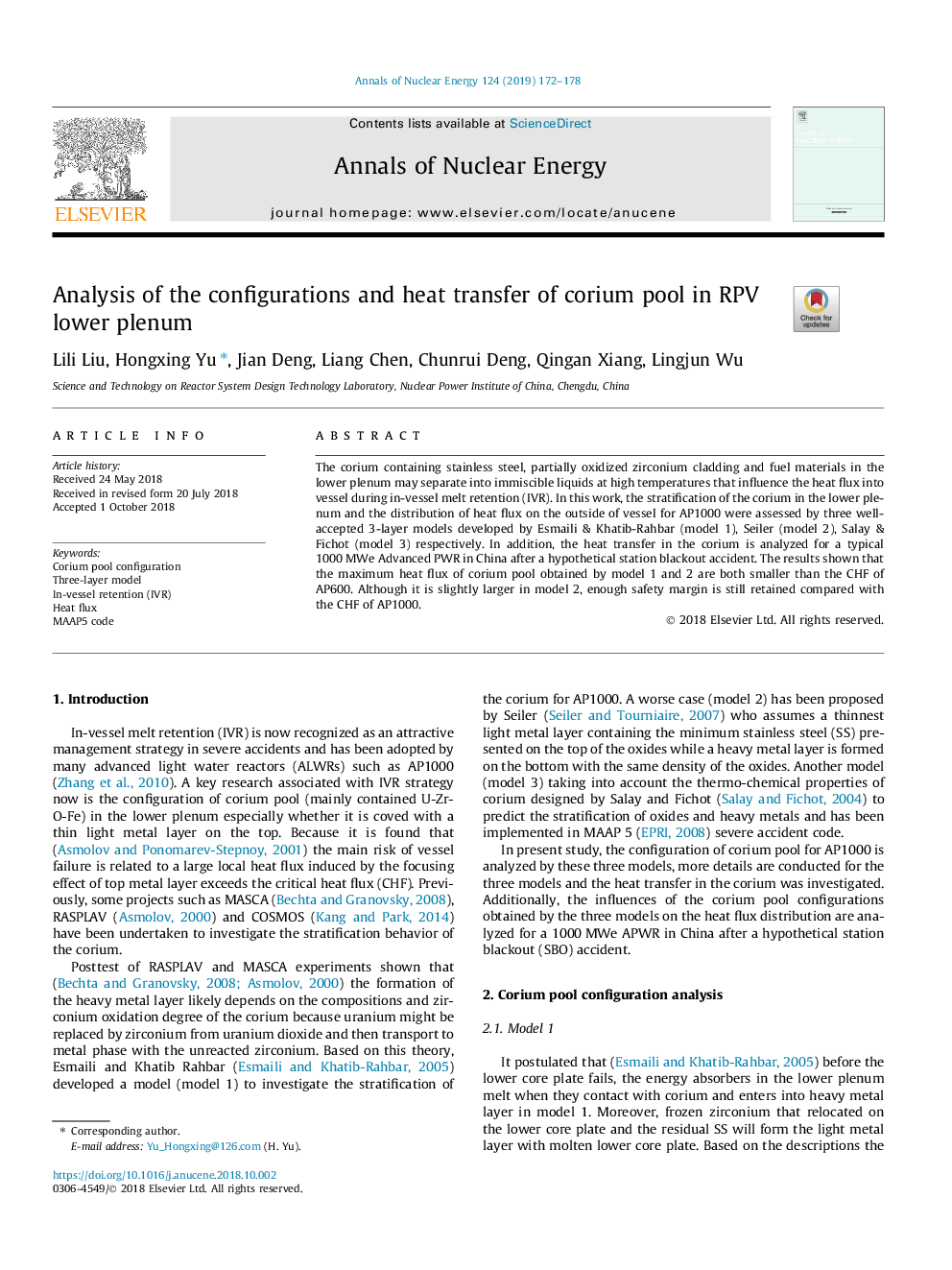| Article ID | Journal | Published Year | Pages | File Type |
|---|---|---|---|---|
| 11019777 | Annals of Nuclear Energy | 2019 | 7 Pages |
Abstract
The corium containing stainless steel, partially oxidized zirconium cladding and fuel materials in the lower plenum may separate into immiscible liquids at high temperatures that influence the heat flux into vessel during in-vessel melt retention (IVR). In this work, the stratification of the corium in the lower plenum and the distribution of heat flux on the outside of vessel for AP1000 were assessed by three well-accepted 3-layer models developed by Esmaili & Khatib-Rahbar (model 1), Seiler (model 2), Salay & Fichot (model 3) respectively. In addition, the heat transfer in the corium is analyzed for a typical 1000â¯MWe Advanced PWR in China after a hypothetical station blackout accident. The results shown that the maximum heat flux of corium pool obtained by model 1 and 2 are both smaller than the CHF of AP600. Although it is slightly larger in model 2, enough safety margin is still retained compared with the CHF of AP1000.
Keywords
Related Topics
Physical Sciences and Engineering
Energy
Energy Engineering and Power Technology
Authors
Lili Liu, Hongxing Yu, Jian Deng, Liang Chen, Chunrui Deng, Qingan Xiang, Lingjun Wu,
